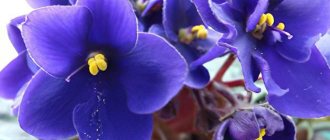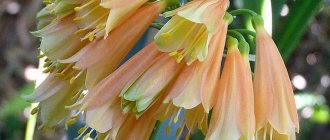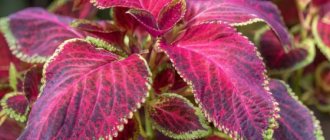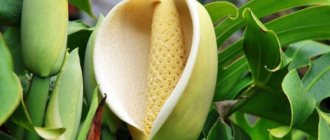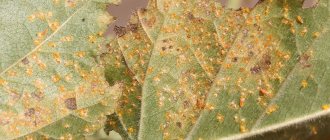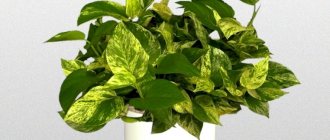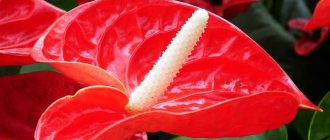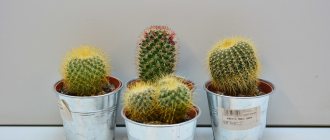The species diversity of milkweed is striking with plants that are different from each other and belong to the same genus – Euphorbia. They differ greatly in description and are represented by herbs, shrubs, and trees. For this reason, folk signs and beliefs may have some differences depending on the specific variety. A common feature of the genus Euphorbia is its poisonous milky sap, which must be taken into account when cultivating the plant indoors.
Is it possible to keep milkweed at home?
The culture has a large number of species and varieties. Sometimes it is difficult to believe that plants with such different botanical descriptions belong to the same genus. For this reason, when deciding whether milkweed can be cultivated at home, you need to consider the specific variety.
All representatives contain milky juice, which has toxic properties. This needs to be remembered by people who have small children and animals at home. In such families, it is permissible to grow a crop only if it is possible to protect household members from a dangerous plant. It is also important to follow safety precautions when caring for indoor flowers, wear protective gloves and sometimes goggles.
Depending on the species and cultivar, spurge varies in its degree of toxicity.
If there is a risk of harming yourself or loved ones, it is recommended to choose varieties with the least toxicity. You should also remember about the possibility of an allergy to this houseplant.
If a flower grows at home
The plant has many varieties. It is believed that White-veined euphorbia has the most beneficial effects compared to other species. Often housewives do not even suspect what kind of flower they are growing.
It is worth identifying the names of each culture in order to find out their characteristics, ignoring which can cause harm not only to the owner, but also to other residents.
Signs about the flower are ambiguous:
Many believe that culture can have a beneficial effect on the human musculoskeletal system. Bone tissue becomes stronger, pain disappears.
The benefits and harms of the flower
There is still no clear opinion as to whether spurge brings more benefit or harm. Some praise the indoor flower for its ability to fight tumor cells, not to mention simpler diseases, while others criticize it for its negative effects on the skin and the risk of poisoning.
The chemical composition of different types of crops is somewhat different, but the main effect on humans and the energy of the surrounding space in plants of this group is still similar.
The benefits and harms of keeping white-veined milkweed in an apartment:
- The milky juice of such a green pet is poisonous and can provoke poisoning, an allergic reaction, and inflammation of the mucous membranes and skin. When consuming milkweed internally, fainting, dizziness, paralysis, nausea, and heart problems are possible.
- In folk medicine, all parts of the plant are used to prepare remedies against paralysis, cystitis, hemorrhoids, edema, and gastrointestinal diseases. It is advisable to use the culture only in the production of formulations for external use.
- Infusions and tinctures from parts of the plant are used to heal wounds and relieve itching after insect bites.
- In cosmetology it is used for the production of anti-aging and decongestant creams and ointments. Before using any product, you must first conduct an allergy test.
- Euphorbia is prohibited from being used orally and externally by hypertensive patients and people suffering from heart and lung diseases.
- Drops of milky juice that fall on the floor or any surface are difficult to clean off, so when working with an indoor flower, it is necessary to cover the surrounding area with film or old newspapers.
- If you place a flower pot next to a computer or TV monitor, the plant will absorb harmful radiation.
- Finding a place in your office means successful public relations and establishing business contacts.
There are varieties of milkweed with thorns. They make it somewhat difficult to care for indoor flowers, and also create additional health risks. Spikes are especially dangerous for children and animals. At the same time, representatives of this genus are highly decorative; having the opportunity to have a similar specimen, you should not refuse.
Folk signs and superstitions associated with the plant
The culture’s ability to help with various diseases, as well as cause harm if handled carelessly, could not go unnoticed. According to signs, milkweed is not the best option for growing at home , but there are also many positive interpretations of beliefs.
According to signs, spurge as an indoor flower brings the following benefits and problems to the house:
- Placing a plant next to the front door means protecting the family from enemies and troubles.
- Euphorbia bloomed in the living room - good luck and happiness.
- In the office, the plant will contribute to a successful business process, career advancement, receiving bonuses, and improving relations with superiors and colleagues.
- In the bedroom, spurge provokes discord, quarrels, and scandals between spouses.
- emotional people to be calmer and more balanced.
- An indoor flower is sick - to problems, difficulties, financial difficulties.
- In the bathroom and toilet, the beneficial properties of milkweed will flow down the drain, but the negative properties will remain.
Signs depending on the type of flower
The genus consists of annual and perennial herbs, shrubs, succulents, and small trees. Some representatives do not have leaf blades as such, others are covered with thorns and prickles, and others have fleshy stems.
This diversity has led to the fact that folk signs and superstitions sometimes differ for different species. The following milkweeds are cultivated in home floriculture:
- Mile;
- globular;
- comb;
- white-veined;
- papillary;
- trihedral;
- poinsettia.
The Latin name of the variety is Euphorbia milii. The culture is also found under the names Milius spurge, brilliant or poinsettia, red, crown of thorns. It is a perennial shrubby succulent. In its natural environment, the bush grows highly branched, up to 1.8 m high. The stem is ribbed and has a grayish tint.
The leaf plate is delicate green in color, measuring 3.5 x 1.5 cm, elliptical in shape, equipped with 2 sharp spines that remain, unlike the leaves themselves, which fall off with age. As a result, there is greenery only at the tops of the shoots.
In the tropics, Mil's milkweed is used to create impenetrable ornamental hedges. In Russia, the plant can be cultivated as an indoor plant. The unusual appearance does not detract from the healing properties of this variety.
Positive qualities of milkweed according to feng shui
According to this Eastern philosophy, indoor flowers must be placed next to the entrance doors. This will protect the room from ill-wishers who will begin to avoid visits, and will also protect it from negative energy from the outside. If you place the flower pot correctly, spurge will bring joy, peace, tranquility, good luck and success to your home.
According to Feng Shui, only plants with thorns have a bad effect on energy. For this reason, it is recommended to choose varieties that do not have them. At the same time, milkweed is endowed with the ability to be a talisman for family members even far from home - at work, for a walk, on vacation, at school, at college.
If an indoor flower grows and develops well at home, it is recommended to grow a small amulet for yourself and for the office using a vegetative method.
Who is Euphorbia suitable for?
Superstitious people must rely on their feelings. When deciding whether it is possible to keep milkweed at home, it is worth considering that signs about it carry positive and negative meanings.
There is also some ban on growing the flower, but from a scientific point of view. The plant has poisonous sap that can cause poisoning and burns. Injections from thorns lead to bad consequences.
You can keep milkweed if you follow safety conditions. This is especially true for owners who have children living in their home.
To prevent the negative energy of the plant from manifesting itself, you need to choose the right location.
White veined spurge, according to Feng Shui, is best placed near the computer. It will absorb all negative energy.
Where to place the plant is not recommended
First of all, you need to pay attention to the fact that the crop is poisonous and can be covered with sharp thorns and thorns. For this reason, it is forbidden to place a flower pot in the house where children or pets can interact with the plant.
The needs of indoor flowers should be taken into account; not all varieties are unconditionally unpretentious. Some require the creation of a certain microclimate and can also negatively affect other crops.
In which rooms should you not keep spurge at home:
The plant can be cultivated at home, subject to safety regulations. Euphorbia has many varieties, but folk signs and beliefs are often the same. At the same time, the appearance of an indoor flower can vary greatly. With proper care, the plant will prosper and bring happiness, good luck and financial success to the house.
In modern floriculture, exotic poisonous plants, which are both dangerous and unusual, are of increasing interest. Among the popular similar flowers, spurge or euphorbia stands out - the only representative of the Euphorbia family, which includes very peculiar and interesting varieties.
In their natural environment, milkweeds are found in the tropics and subtropics. These are annual or perennial herbaceous plants that grow as shrubs and low-growing trees. Decorative species are somewhat different; these are low succulents of a wide variety of shapes and types.
Although this succulent delights many flower growers, it also frightens them with its toxicity and a lot of rumors and superstitions. But in fact, what does the indoor spurge flower bring into the house and is it worth getting this exotic “green pet”?
What properties does the indoor plant Euphorbia have according to Feng Shui?
Lovers of flowers and plants do not miss the opportunity to make a new green friend in their home.
However, they do not always take into account the peculiarities of Feng Shui, so sometimes the plant ends up in an area that is inappropriate for it, thereby beginning to negatively affect the people around it. Therefore, before you start growing milkweed in your home, you should become familiar with its Feng Shui properties. The presence of milkweed in the house
As you know, all plants have enormous power, because they are living, so they can spread their energy to people. Euphorbia is no exception; moreover, it is a very beautiful plant, and few people would refuse its presence in their home. After all, in addition to its life-giving power, it is able to create harmonious relationships in the family and reward the owners with positive emotions. It gives peace and relieves any tension from a person, which can be both spiritual and physical. Euphorbia also has a beneficial effect on the human skeletal system, exhibiting its strengthening functions, and also protects it from various pains. Therefore, based on these properties, it becomes obvious that milkweed is a houseplant that should be kept in every home. And when the plant begins to bloom, it thereby attracts happiness and good luck to the house. However, if you do not provide the plant with proper care or keep it in an inappropriate place, then all its positive qualities may turn out to be negative. And then the plant can become the cause of unhappiness in the family, quarrels and discord, and, of course, frequent illnesses of one of their owners.
The presence of milkweed in the office
Sometimes it is useful to keep milkweed not only at home, but also at work. After all, its positive properties can attract good luck, and, consequently, career success. A person who has this flower in his office has a greater chance of moving up the career ladder or simply receiving an unexpected bonus. Also, the attitude of colleagues and superiors will be very good, so a person’s mood will always be at its best, because he will receive from work everything that many can only dream of. However, there are also some nuances here, because if you do not take care of the milkweed, then it will begin to show all its properties from the completely opposite side, therefore, it is possible that you will have to forget about the career altogether. After all, Feng Shui of flowers is about helping people achieve success in certain matters, but people themselves should show gratitude to plants.
Plant care
As already mentioned, in order for milkweed to have only good properties, it must be cared for, but this must be done very carefully. Although the plant seems harmless, it nevertheless has thorns that can not only cause pain to those who touch it, but also release their caustic juice. Therefore, first of all, you should be careful. You also need to take care of the soil for milkweed, because it must be clayey and always have the addition of fine gravel or sand. Lighting and temperature also play a significant role in caring for the plant, so the flower should be kept only in a place where it will receive sunlight; a window sill is ideal for this. As for the temperature, it should be about 10 degrees, but not lower than seven, and in the summer the plant should be given access to fresh air. Indoor spurge does not need to be watered as often as many plants. Firstly, the soil should dry out between waterings, and the watering interval itself should be two weeks. But on too hot days, you need to water the flower once a week. And in winter, when the leaves completely fall off, the plant does not need to be watered at all. It is recommended to feed spurge with potassium fertilizers only 3 times during the summer. Also, if the flowers have dried out, then you should get rid of them as soon as possible, because otherwise the plant can bring misfortune to the owner. If all these conditions are met, then the milkweed will feel that it is respected, therefore, it will thank its owners for this as much as possible, extending its wonderful properties to them. Otherwise, the situation may turn out to be the opposite, so if people have no desire to devote time to their plants, then there is no point in hoping that they will have a happy life.
Euphorbia variety
It is quite difficult for people who are not particularly knowledgeable about indoor plants to recognize Euphorbia euphorbia among succulents; representatives of this species are so diverse that they may be completely different from each other. But the following varieties are especially popular:
- White-veined spurge - also known as white-veined. This succulent, reminiscent of a palm tree, is a frequent inhabitant of the house; it is distinguished by its spectacular columnar shape. The trunk is ribbed, the leaves are large, oval, and against their background the inconspicuous inflorescences look rather inconspicuous.
- Euphorbia triangular is a perennial shrub with thick, triangular stems. The branches are dark green, have white streaks on them, and branch well. The stems are covered with reddish-brown thorns, the leaves are fleshy and blade-shaped.
- Euphorbia tirucalli is another member of the Euphorbiaceae family, which is distinguished from the rest by the absence of leaves and spines. This succulent consists entirely of numerous fleshy stick-stems. It blooms only if it receives proper care.
- Spurge spurge is a beautiful, widespread, thorny bush with a fleshy, dense stem and small green leaves.
- Cypress is a perennial herbaceous plant, the height of which does not exceed 30 cm. The stem of the flower is straight, bare, grayish-green in color. The rhizome is branched, creeping.
- Medusa's Head - this perennial has such an ominous name for a reason; the plant has many elongated, narrow shoots that look like tentacles. It is better to grow it in a hanging flowerpot.
- Armored is a succulent in which young shoots are covered with leaves growing perpendicular to the trunk. The upper leaves of the plant are elongated, in contrast to the short lower ones.
Characteristics and description
Euphorbia triangularis is a perennial stem succulent of the Euphorbiaceae family. The deserts of South Africa are considered the birthplace of the succulent.
A large bushy plant with a small root system and tall growth. The powerful fleshy stem up to 6 cm in diameter with pronounced three edges attracts attention. The flower is decorated with small brownish spines up to 5 mm long and lanceolate, oval leaves 3-5 cm long, bent down. The culture in indoor conditions can reach two meters in height.
The plant is popular due to its exotic appearance and enormous endurance to various adverse factors. Therefore, triangular euphorbia retains its decorative effect for a long time, giving the interior a stylistic mystery.
About the benefits and harms of milkweed
All parts of euphorbium are filled with a poisonous liquid, white or colorless, which circulates inside the plant. This juice is one of the ten most poisonous compounds of plant origin, so those who want to have a similar flower should know about this “feature” in advance.
Analysis of the liquid showed that it contained a whole complex of toxic components - alkaloids, saponins, resins, rubber, and polyphenolic compounds. Biologists did not study the composition of the plant in detail, however, they were able to find out that it contains a certain amount of euphorbon, amphora gum, and coumarin.
If ingested, milkweed juice can cause severe intoxication or an allergic reaction, and also cause burns on the skin. And in order to eliminate possible negative consequences, it is recommended to think about precautions, or refuse to grow such a flower at home.
Despite the toxicity of milkweed, it has medicinal properties. Almost all parts of the succulent are used by pharmaceutical companies as raw materials for medications.
The juice of this flower has a diaphoretic, anti-inflammatory, diuretic and analgesic effect. In ancient times, when the only method of therapy was the use of folk recipes, people used it to treat animal and insect bites, as well as non-healing, festering wounds.
Modern research has shown that the enzymes contained in the juice are effective in the fight against leukemia, as they are powerful immunostimulants.
Stems, flowers, and roots of milkweed are used to prepare medicinal tinctures, which are used to treat dermatological diseases and stomach diseases. Their effectiveness is associated with glycosides, tannins and saponins contained in the plant.
Indoor spurge is beautiful and original, and the abundance of species and varieties allows you to choose a flower “to your liking.” But its toxicity and the things that are associated with it that hover around can completely discourage the desire to have such a pet. How true are signs and superstitions and what does Feng Shui say about euphorbia?
Truth and prejudice: yes or no do I have milkweed in the house?
In fact, many gardeners are not deterred by the extravagance of this plant, but, on the contrary, attracts attention. And the question of whether it is possible to keep milkweed in the house does not concern them too much. Actually, there are no categorical statements or prohibitions. However, Feng Shui warns that all prickly and poisonous flowers have a number of special requirements:
- Cactus and other thorny plants should not be placed in a recreation and marriage area, for example, a bedroom. It is believed that it negatively affects intersexual relations, and “thorns” can hardly be attributed to symbols of conception and procreation, rather the opposite. Euphorbia is in this category, so this applies to it too.
- Euphorbia is often called the “palm of misfortune” and there is an opinion that the flower brings negativity into the house. This is partly true, since the toxicity of the succulent can cause accidents, and in addition, this flower often acts as an allergen, worsening the condition of the residents.
- But, the negative characteristics of milkweed can turn into advantages if you find the right place for it. It is believed that the presence of such a plant in the hallway, at some distance from the doors, is a powerful protection and amulet for the home from negative influences. It prevents negative energy from entering the house.
- Euphorbia has no place in the toilet or bathroom - in this case, all positive energy will leak out with water, and the negativity will remain.
- It is not recommended to place succulents near water; after all, they are desert dwellers. There is a belief that such a location of a flower in a house leads to the development of chronic diseases in residents.
- Euphorbia is also not suitable for children's rooms - playrooms and bedrooms. According to Feng Shui, it has energy that can negatively affect children. And besides, there are well-founded reasons why the plant should not be placed in such premises - it has poisonous sap, which can cause burns or poisoning, and thorny parts that can cause injury.
- The peak of the magical power of many plants is the flowering period. At this time, the succulent can be placed in the living room; it will also become an excellent interior decoration, causing the envy and admiration of guests. However, when the process is completed and the flowers have fallen, it is advisable to place the flower in another place.
The main signs and superstitions associated with indoor plants are associated with their death. For example, if a flower dies, it is believed that it saved people from misfortune and prevented trouble. However, flower growers believe that diseases and pests, or poor care are to blame.
Another dubious belief has ruined more than one beautiful plant; it says that a stolen flower survives much better. But a barbarously separated cutting or roughly torn off shoot, during a period not suitable for plant propagation, can greatly harm it and even cause death.
So, plant growers do not approve of all superstitions, and you can leave milkweed as a houseplant without forgetting about precautions. Poisonous succulent in the house: precautions and features Such an unusual home flower requires a special approach and compliance with certain rules:
- It is prohibited to prepare medicines from milkweed or other poisonous plants at home; parts of flowers emit harmful substances that can cause poisoning;
- You should not take or use traditional medicine containing this component without first consulting a doctor;
- if there are animals in the house that can get to a dangerous plant, you should think about whether you need to take such a risk;
- During activities related to caring for a succulent, you should not neglect protective equipment - you should only touch it with gloves.
Signs
Let's look at some signs and superstitions about indoor milkweed.
- Euphorbia in the house - for warm relationships within the family. Household members will be charged with positive energy from him, since he is endowed with incredible vitality.
- It is strictly forbidden to place the plant in the bathroom, because in this case positive energy will leave the house.
- Should not be placed in the bedroom or nursery. The energy emitted by the plant can negatively affect marital relationships and even the health of household members. You should not keep it in a child’s room because the flower is poisonous. If plant juice gets on the skin, burns may occur. But the toxins contained in the juice, when they enter the human stomach, cause severe poisoning.
- The flowering of milkweed triangular is considered a good sign. Happiness, prosperity and tranquility will reign in the house, as well as complete order with money. During the flowering period, it is best to place it in the living room.
- If an overly impressionable person is engaged in cultivation, thanks to the plant he will become calmer.
There is also a belief that if a flower began to fade and die without obvious reasons, then it took on a huge blow of negative energy, while saving the house and its residents from adversity, trouble and illness.
We hope that the signs and superstitions associated with Euphorbia triangular will help you find the most suitable place for the flower in your home, and at the same time it will become an excellent interior decoration.
Flowers in the house are not only for decoration. They create the necessary energy and influence the residents, each in a different way. Before buying a plant for your home, they study what magical abilities it has. Bright tropical species are of great interest - even poisonous varieties with thorns find their fans. Euphorbia is one of them. This is a beautiful flower, striking in its bright colors and variety of species. It scares many people away because of the signs and superstitions associated with it.
Milkweed juice poisoning
If the plant juice does enter the human body, then it is necessary to proceed according to the following algorithm:
- take care of providing the patient with peace - physical and emotional;
- the patient is given enterosorbent - activated or white carbon, Enterosgel, Polysorb, etc.
- You can quickly remove toxins from the body using saline laxative solutions, for example, Magnesium sulfate;
- a poisoned person should drink a lot - water, mineral water, jelly, non-acidic compotes.
How can it be dangerous?
If you stop caring for a flower, causing it to wither, your career and business projects will go in the same direction.
Whether the flower is useful for you personally or its influence will be negative - time will tell. Euphorbia is poisonous - its juice contains substances that, if entering the human body, will lead to poisoning. Contact of plant juice on the skin can cause burns and allergic reactions.
Burns from poisonous plants
The juice that comes out of the succulent burns the skin, and if there is increased sensitivity to its substances, ulcerations appear. The first sign of skin damage is a burning sensation, the affected area swells, turns red, becomes covered in a rash, and is itchy.
To reduce unpleasant symptoms or completely eliminate them, you need the following:
- You should wash your hands with soap;
- apply an anti-burn agent to the damaged area;
- take an antihistamine: Suprastin, Loratadine, Tavegil or another.
The most dangerous situation is the contact of milky juice with the mucous membrane of the eye. In this case, there is a sharp burning pain, swelling, and visual acuity decreases. In the case of euphorbia liquid, temporary blindness may occur. Such a burn leads to inflammation of the conjunctiva. And with extensive damage to the eye, a person can go blind forever.
If the juice gets into your eyes, you should wash your hands with soap and rinse your eyes with plenty of water or chamomile infusion. You can eliminate pain using antiallergic drugs: Dexamethasone, Maxidex, Allergodil.
Such emergency aid algorithms are suitable if poisoning or burns from any poisonous plant occur.
Why can't you keep milkweed at home? White poison!
Euphorbia is a seemingly common house plant. But we must not forget that the Euphorbia family, to which this green bush belongs, is poisonous. The milky thick sap that appears on a broken leaf or stem causes a severe burn on the skin, and if it gets into the blood or mucous membrane it will lead to poisoning. Signs of milkweed poisoning include dizziness, nausea, dry mouth, diarrhea and, as a result, dehydration.
In this case, rinsing, sorbents and laxatives can help. However, doctors admit that the chemical properties of milkweed have not yet been fully studied. It is all the more dangerous to keep it at home, where it can get on the skin, on a wound or in the mouth during transplantation, watering, or simply by accident. What if there are small children at home? Caution and caution again!
Types of milkweed
You need to be a skilled botanist to identify this dangerous plant among other house flowers.
The Euphorbia family, suitable for growing at home, is very numerous:
- Euphorbia leuconeura, lat. Euphorbia white vein - it is characterized by small brown specks throughout the stem and base of the leaves;
- Euphorbia lophogona, lat. Euphorbia comb - sharp needles are sure to stand out on the ribbed stem;
- Euphorbia milii, lat. Euphorbia Mila - it has small oval leaves and gorgeous pink or yellowish inflorescences;
- Euphorbia trigona, lat. Euphorbia triangular - according to its name, it has a powerful triangular trunk covered with small dense reddish leaves;
- Euphorbia enopla, lat. Euphorbia enopla - looks like a cactus, but with soft needles;
- Euphorbia obesa, lat. Euphorbia obese is a large (up to 10 cm in circumference) whitish ball of closed leaves, decorated at the top with white or pink small flowers;
- Euphorbia caput-medusae, lat. Euphorbia "Medusa's Head" - thick, scaly stems of dark green color without pronounced leaves and flowers;
- Euphorbia pulcherrima, lat. Euphorbia Poinsettia is the most beautiful member of the family, with red and burgundy leaves on a thin stem.
Home pest
Don't be fooled by the attractive appearance of milkweed. It is dangerous at home, and not only because of the poisonous properties of its juice. Like any poisonous plant, spurge has negative energy. He tends to accumulate negativity around himself, provoking quarrels, illnesses and general ill-being.
No matter what room you place a pot of milkweed in, it will certainly be out of place.
- in the bedroom, a thorny plant will cause barbs and causticity between spouses;
- in the living room, small leaves of milkweed will scare off wealth in the family;
- in the kitchen, thick stems with needles and scales will quarrel between households, turning them into a “tangle of snakes”;
- in the bathroom or toilet, running water will absorb all the negativity of milkweed, acquiring bad properties;
- There is no place for a poisonous plant in a nursery!
Perhaps you should give up growing milkweed at home. Leave it to grow in the wild forests of Madagascar and the jungles of Mexico - that's the smart thing to do.
Propagation of milkweed by cuttings
Milkweed is propagated by cuttings in the spring, but if the flower begins to rot, the cuttings can be cut at any time. In this case, propagation by cuttings becomes the only possible option for preserving the plant.
Cut cuttings 15 cm long. They must have at least 3 leaves. The cut site is washed and wiped, otherwise the viscous juice will flood the wound and rooting will be difficult. The planting material is placed in a dark, dry place for several days so that a film appears on the cut.
After this, the cuttings are left to root in a peat-sand mixture at + 20°C. After the appearance of small roots and 2 - 3 new leaves, the milkweed mila is planted in a pot.
